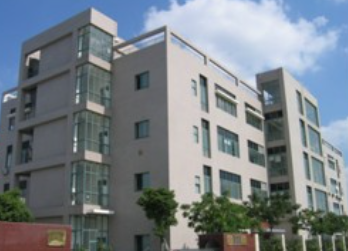对于2,3位没有取代基的吲哚,一般工业上大多采用硝基苯的衍生物出发合成,邻甲基、邻甲酰基、邻氰乙基、邻乙烯基、及邻位有氢的硝基苯衍生物都可通过相应的方法得到吲哚。

一、邻甲基硝基苯衍生物合成吲哚
该方法是目前最常用的,邻甲基硝基苯衍生物与DMF-DMA反应后得到相应的烯胺,然后硝基可通过多种方法还原后加成得到吲哚。还原方法一般通过加氢,但当分子内有敏感官能团(比如:Br,I都可或烯烃等)存在时可通过化学还原如:NH2NH2-RaneyNi, 铁粉,TiCl3, 锌粉还原得到吲哚。

二、邻甲酰基硝基苯衍生物合成吲哚
该邻甲酰基硝基苯衍生物与硝基甲烷反应后得到相应的不饱和硝化物再还原后得到吲哚。

To a solution of 2-nitro-benzaldehyde 1 (3.14 g, 0.02 mol) in nitromethane (40 mL) was added ammonia acetate (0.9 g,0.012 mol) under N2 protected. Then it was heated to reflux for 1.25 h. After cooled to room temperature, it was poured into water and stirredfor 30 min. Then it was extracted withDCM (50 mL×3), and the combined organic layer was washed with brine, dried overNa2SO4 and evaporated under vacuum. The residue was purified by flash columnchromatography to yield 1.2 gpure 2-(2-nitro-vinyl)-nitrobenzene 2. Yield: 42%
To a solution of 2-(2-nitro-vinyl)-nitrobenzene 2(1.0 g, 0.005 mol) in ethanol (10 mL), glacial acetate acid (10 mL) and water (3 mL) was added ironpowder (5.7 g, 0.1 mol)portionwise. After the addition, it was heated to 50 °C for 30 min. After cooled to room temperature, aq. NaHSO3was added to it and extracted with ether (50 mL×3). The combined organic layer was washed withsaturated aq. NaHCO3, dried over Na2SO4 andevaporated under vacuum. The residue waspurified by flash column chromatography to yield 0.45 g 1H-indole 3. Yield: 75%
Ref: (a) Sinhababu, Achintya K.;Borchardt, Ronald T., J. Am. Chem. Soc., 1985, 7618, (b) He,Feng; Bo, Yunxin; Altom, Jason D.; Corey, E. J.; J. Am. Chem. Soc.,1999, 6771.
三、邻氰甲基硝基苯衍生物合成吲哚示例

To a solution of 2-nitro-1-naphthyl-acetonitrile (33g, 0.155 mol) in 630 mL of ethanol containing10% water and 6.3 mL of pure acetic acid was added 19 g of 10% palladium-on-carbon. Then it was stirred at r.t. under 4 bars ofhydrogen. After the reaction completed,the catalyst was filtered and the filtration was concentrated under reduced pressure. Then residue was dissolved in 250 mL of DCM,washed with 100 mL of 0.1 N KOH solution and then dried over Na2SO4,evaporated under reduced pressure to give the crude product, which was purifiedby column chromatography using cyclohexane/EA=4:1 as eluant to yield 13 g of 3H-benzo[e]indole. Yield: 50%
Ref: (a) Makosza, M. et al., Tetrahedron, 1995,7263. (b) Bromidge, S.M. et al., J. Med. Chem., 1998, 1598.
四、邻乙烯基硝基苯衍生物合成吲哚示例

To a solution of 2-bromo-4-methylnitrobenzene 1 (1.00 g, 4.61 mmol) and vinyltri-n-butyltin(1.61 g, 5.07 mmol) intoluene (25 mL) was added, under a positive flow of argon,bis(dibenzylideneacetone) palladium (0)(265 mg, 0.46 mmol) together withtriphenylphosphine (498 mg, 1.90 mmol). Thesolution was heated at reflux (19 h) whereupon a red solution containing a blackprecipitate was formed. The reactionmixture was cooled to ambient temperature, and the solvent was removed to giveblack oil. The oil was dissolved indichloromethane (50 mL), washed with NH4OH (10%, aq, 3 x30 mL), and dried(MgSO4). Removal of solvent gave yellowoil containing a smaller amount of black viscous oil. The crude product was purified bychromatography (hexanes-EtOAc, 19:1) to give 2-ethenyl-4-methylnitrobenzene(589 mg, 3.61mmol, 78%) as yellow oil 2.
To an oven-dried, threaded ACEglass pressure tube was added 2-ethenyl-4-methylnitrobenzene 2 (152 mg,0.93 mmol), Pd(OAc)2(13 mg, 0.06mmol), triphenylphosphine (62 mg, 0.24 mmol), and 4 mL of MeCN. The tube was fitted with a pressure head, thesolution was saturated with CO (four cycles to 4 atm of CO), and the reactionmixture was heated to 70 °C(oil bath temperature) under CO (4 atm) until all starting material wasconsumed (15 h) as judged by TLC. Thereaction mixture was diluted with HCl (aq, 10%, 10 mL) and extracted with Et2O (3×10 mL). The combined organic phases were washed withHCl (aq, 10%, 10 mL) and dried (MgSO4), and the solvent was removed to give the crude product. The crude product was purified bychromatography (hexanes-EtOAc, 9:1) to give 5-methylindole 3 (62 mg,0.47 mmol, 51%) as faint yellow crystals.
Ref: Soederberg, B. et al, J.Org. Chem., 1997, 5838
五、邻位有氢的硝基苯衍生物直接用乙烯格氏试剂合成吲哚(Bartoli反应,点击查看详细内容)

The 2-nitrotoluene (685 mg, 5mmol) was placed in a two–necked round bottomed flask fitted with a gas inlet(argon) and rubber septum. The flask was purged several times with argon beforeadding THF (35–40 ml) and cooling to between –40 and –45 °C. The Grignard reagent (3 eq.) was then addedrapidly in one portion to the THF solution and stirring continued for a further30 mins to 1 hour (exact length of time had little effect on yield). Saturatedammonium chloride solution was added to the reaction mixture (at ca. –40 °C) before allowing the mixture towarm to room temperature. The mixture was thoroughly extracted with diethylether (2 x 200 ml), the ether extracts combined and thoroughly washed withfurther ammonium chloride (300 ml), water (300 ml) and brine (300 ml) beforedrying (MgSO4) and concentrating in vacuo to give a dark brown gum, which was purifiedby flash column chromatography (hexane:ethyl acetate 9:1) to give 465 mg of7-methyl-indole. Yield: 71%.
Ref: (a) Adrian P. Dobbs,Martyn Voyle, Neil Whittall, Synlett, 1999, 1594, (b) Curtin, M.L et al, J.Med.Chem.,1998, 74.
本文非原创内容,版权归原作者所有。







